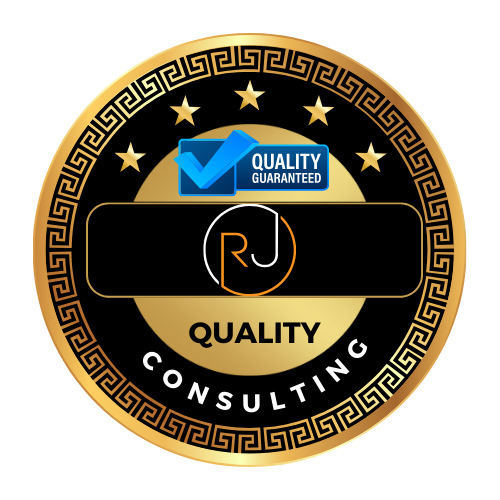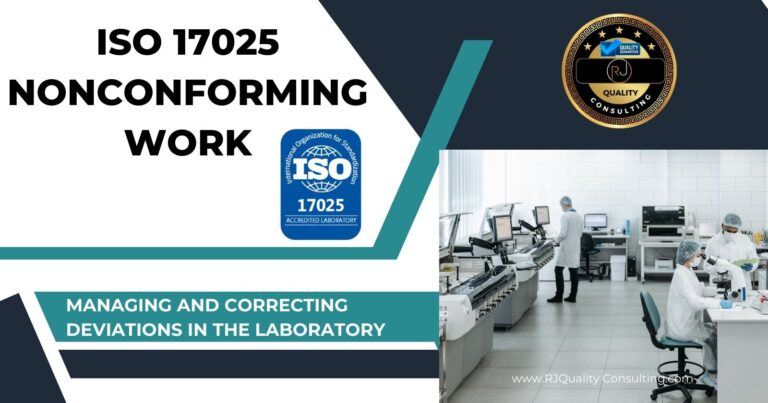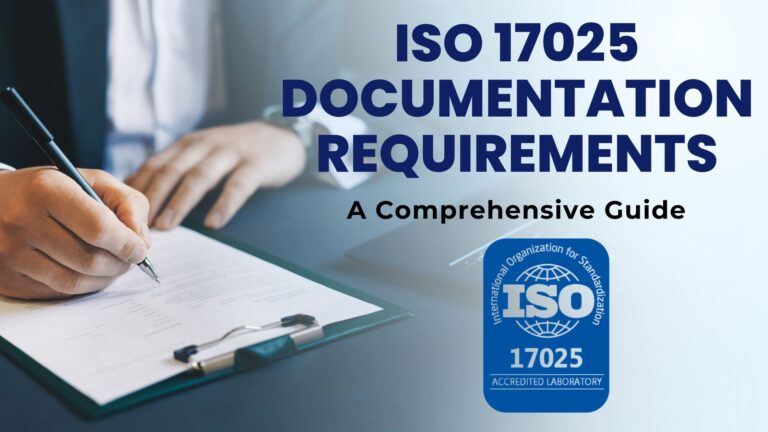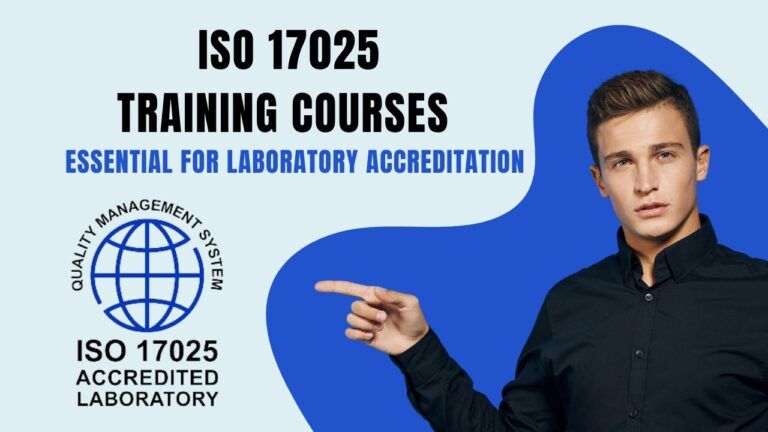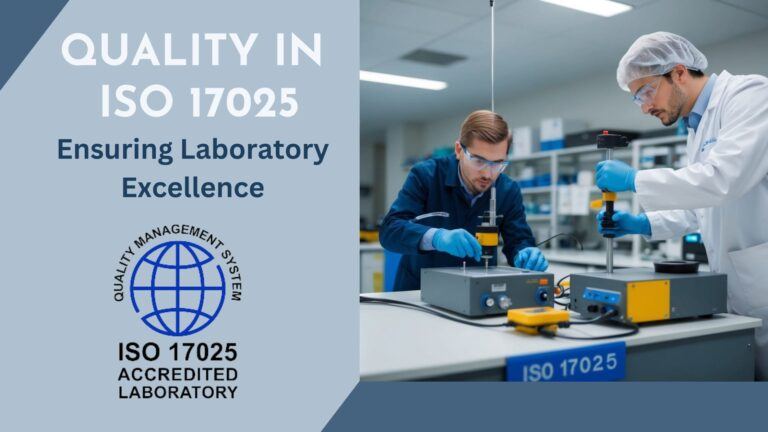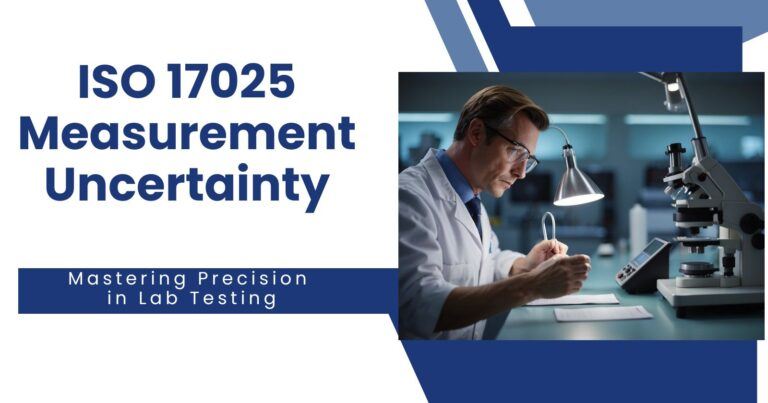ISO 17025 Certification Requirements
ISO 17025 certification requirements are a valuable tool that lists the requirements laboratories and testing facilities must meet to show competence. I have spent years as a certified ISO/IEC 17025 assessor and have come to truly appreciate the clarity this standard brings. It serves as a guide for labs, ensuring impartiality, reliability, and technical competence in testing and calibration activities. In this article, I break down the sections of the 2017 standard while sharing practical insights and personal experiences from my work in the field.
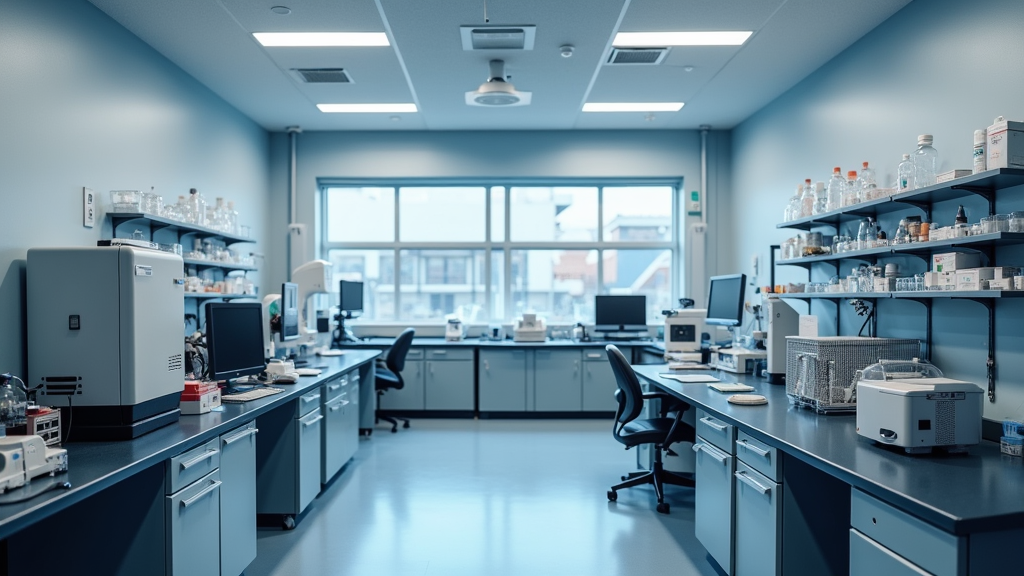
To complement the insights shared in this article, I’ve created a concise video that breaks down the essential steps your laboratory needs to achieve ISO 17025 accreditation. Whether you’re a quality manager, lab technician, or lab owner, this visual guide will provide you with a clear roadmap to certification. Watch the video below to enhance your understanding and take the next step toward ensuring your lab’s competence and credibility.
Overview of ISO/IEC 17025 Certification Requirements
The ISO/IEC 17025:2017 standard organizes its requirements into five key sections that cover different aspects of a laboratory’s operations. Having overseen many accreditation processes, I know that understanding each requirement—from the general to the very specific—is key to successful certification. Below, I explain what each section involves and why every element is important for maintaining quality and reliability.
📘 ISO/IEC 17025 Quality Manual Template
Accelerate your lab’s accreditation process with our comprehensive Quality Manual Template, designed to align with ISO/IEC 17025:2017 standards.
- Fully editable and customizable to fit your laboratory’s needs.
- Includes all necessary procedures, forms, and policies.
- Structured to facilitate easy implementation and compliance.
- Developed by experts with extensive ISO/IEC 17025 experience.
ISO 17025 General Requirements – Clause 4
Found in section 4, the General Requirements lay the foundation for laboratory operations. This section stresses the need for impartiality and confidentiality. In my experience as an assessor, labs that adhere strictly to these principles usually have smoother accreditation processes.
Impartiality: Laboratories must avoid any conflicts of interest that might affect results or their interpretation. A clear policy to identify and manage potential bias are necessary. Every team member should understand the importance of maintaining neutrality and applying statistical rigor in their testing methods. The other important thing to consider is identifying risk to impartiality on an ongoing basis. This can be done through documenting this discussion during Management Review.
Confidentiality: Protecting customer information and proprietary procedures is a cornerstone of the standard. Facilities must set up secure systems to ensure that all shared data is handled discreetly. In my role, I have found that laboratories investing in secure data management earn greater trust from their clients.
Establishing these general requirements sets the stage for higher quality testing. They ensure that the laboratory operates with the transparency and objectivity expected by clients and regulators. Implementing a confidentiality policy along with proper documentation reflecting employees and contractors agree to keep information confidential. This can be done through confidentiality agreements signed by both employees and contractors.
ISO 17025 Structural Requirements – Clause 5

Section 5 focuses on how a laboratory must be organized to maintain a clear chain of responsibility and accountability. The structure details how independent and unbiased decisions should be managed.
This section establishes specific structural requirements to ensure laboratories maintain legal responsibility, effective management, and operational integrity. These requirements are fundamental to demonstrating a laboratory’s competence and adherence to regulatory and accreditation expectations.
Legal Entity and Management Responsibility
A laboratory must function as a distinct legal entity or be a clearly defined part of a legal entity that assumes full responsibility for its laboratory activities. This ensures accountability for all testing, calibration, and associated processes. Objective evidence of this can be proof of a business license or LLC documentation.
Laboratories are required to identify and document the management team responsible for overseeing operations. This includes defining roles and responsibilities to ensure compliance with ISO/IEC 17025:2017 and regulatory bodies. Examples of this can be found in the company’s quality manual or training procedures and job descriptions.
Scope of Activities and Conformity
A laboratory must clearly define and document the scope of its activities that align with ISO/IEC 17025:2017. It can only claim conformity for activities it directly conducts and controls. Ongoing laboratory work that is outsourced does not fall under its accredited scope unless explicitly covered under externally provided services (as per Section 6.6 of the standard).
Organizational Structure and Management System
To maintain effective operation, laboratories must establish a structured organization where responsibilities and authority are clearly defined. This includes:
- Specifying relationships between management, technical operations, and support services.
- Assigning competent personnel to oversee laboratory activities and ensure compliance with standards and customer requirements.
- Documenting procedures to ensure consistency in laboratory processes and the reliability of results.
Resource Allocation and Operational Oversight
Laboratories must have personnel with sufficient authority and resources to:
- Implement, maintain, and improve the management system.
- Identify deviations from established procedures and take corrective action.
- Ensure continuous compliance with accreditation and regulatory requirements.
- Monitor and report on system performance, including the effectiveness of laboratory activities.
Ensuring Communication and System Integrity
Laboratory management is responsible for maintaining clear communication regarding the effectiveness of the management system. This includes:
- Ensuring all personnel understand the importance of meeting customer and regulatory requirements.
- Maintaining the integrity of the management system when implementing changes to laboratory procedures.
By adhering to these structural requirements, laboratories establish a solid foundation for competence, impartiality, and reliability in their testing and calibration activities, aligning with international best practices.
ISO 17025 Resource Requirements – Clause 6
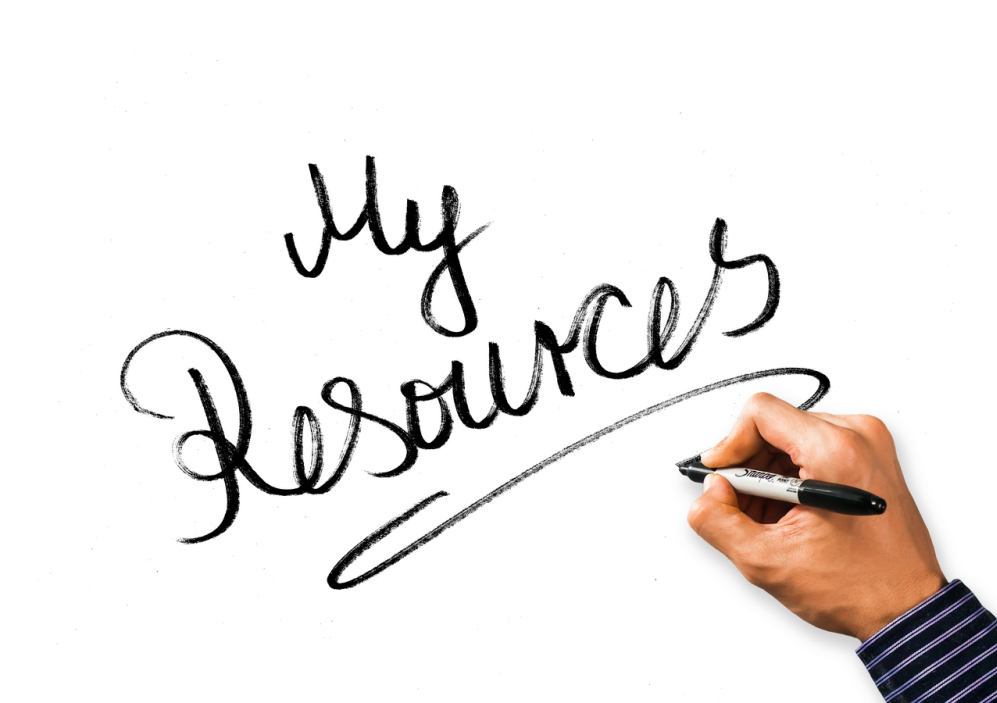
Section 6 deals with the resources needed by a laboratory. It covers everything from physical facilities to environmental conditions under which tests and calibrations are performed. This section ensures that equipment, facilities, and staff expertise are sufficient for precise work and incorporates most of the ISO 17025 technical requirements.
This section establishes specific resource requirements to ensure that laboratories have the necessary personnel, facilities, equipment, and environmental conditions to produce valid and reliable results. Effective resource management is fundamental to ensuring the accuracy of testing and calibration activities.
Personnel Competence and Qualification
Laboratories must ensure that personnel performing testing, calibration, and related activities are competent, impartial, and appropriately trained. This involves:
- Defining and documenting competency requirements, including education, training, skills, and experience.
- Providing continuous training and development to maintain staff proficiency.
- Authorizing personnel to perform specific tasks such as method validation, data analysis, and reporting results.
- Keeping detailed records of training, qualifications, and competency assessments.
A commitment to professional development enhances laboratory performance and ensures compliance with accreditation and regulatory requirements.
Facilities and Environmental Conditions
The laboratory’s physical environment must be suitable for its testing and calibration activities. Facilities must be designed and controlled to prevent adverse influences on results. This includes:
- Maintaining appropriate temperature, humidity, cleanliness, and contamination control.
- Implementing controls to prevent cross-contamination, interference, or environmental factors that could compromise test validity.
- Ensuring controlled access to laboratory areas to maintain integrity.
- Monitoring and documenting environmental conditions when they could impact measurement results.
When laboratories conduct activities off-site or in customer facilities, they must ensure that these requirements are still met.
Equipment Management and Metrological Traceability
Laboratories must have access to properly maintained and calibrated equipment that is suitable for its intended use. This requires:
- Verifying that all equipment meets specified performance requirements before use.
- Establishing calibration programs to ensure traceability to recognized standards, such as the International System of Units (SI).
- Conducting periodic maintenance and performance checks to prevent equipment malfunction.
- Keeping comprehensive records of equipment identification, calibration, maintenance, and repairs.
Any equipment found to be defective, out of tolerance, or unreliable must be taken out of service until its proper function is restored. In addition, a nonconformance needs to be generated and appropriate actions addressed before the equipment is put back into service.
Externally Provided Products and Services
When laboratories rely on externally provided services or supplies—such as calibration services, reference materials, or outsourced testing—they must ensure that these external providers meet quality and technical competency requirements. The selection, evaluation, and monitoring of external providers must be documented to maintain compliance with accreditation standards. In addition to this, an externally provided products and services procedure needs to be implemented.
ISO 17025 Process Requirements

Section 7 of the ISO/IEC 17025:2017 standard outlines specific process requirements to ensure that laboratory activities—including method selection, validation, sampling, testing, calibration, data management, and reporting—are conducted with accuracy, consistency, and reliability. These requirements establish a systematic approach to ensuring valid results and maintaining customer confidence.
Review of Requests, Tenders, and Contracts (Section 7.1)
Before undertaking any laboratory activity, laboratories must conduct a comprehensive review of customer requests, tenders, and contracts to confirm that:
- The requirements are clearly defined, documented, and understood.
- The laboratory has the necessary competence, resources, and methods to meet these requirements.
- Any externally provided laboratory activities comply with ISO/IEC 17025 requirements.
Customers must be informed if the requested method is inappropriate or outdated, and any contract amendments must be communicated and recorded.
Selection, Verification, and Validation of Methods (Section 7.2)
Laboratories must use appropriate and validated methods for testing and calibration. This includes:
- Selecting and using internationally recognized, national, or industry-accepted methods.
- Verifying that standard methods can be correctly implemented within the laboratory’s environment.
- Validating non-standard, internally developed, or modified methods to ensure their suitability for intended use.
- Documenting method validation results, including performance characteristics such as measurement range, accuracy, precision, and uncertainty.
Any deviation from a standard method must be documented, justified, and approved.
Sampling and Handling of Test or Calibration Items (Sections 7.3 and 7.4)
If a laboratory performs sampling, it must follow a documented sampling plan and method to ensure sample integrity. Sampling records must include:
- The date, time, and location of sampling.
- Environmental conditions affecting the sample.
- Identification of personnel and equipment used.
For test and calibration items, laboratories must have procedures for:
- Receiving, storing, protecting, and handling items to prevent contamination or damage.
- Unique identification of samples to avoid mix-ups.
- Recording and addressing any deviations from specified conditions upon receipt.
If an item does not conform to specified conditions, the laboratory must consult with the customer before proceeding.
Technical Records and Measurement Uncertainty (Section 7.6)
Laboratories must maintain detailed technical records that allow for the reproduction of test or calibration activities under conditions as close as possible to the original. These records should include:
- All observations, data, and calculations.
- The date and identity of personnel responsible for laboratory activities.
- A traceable record of any modifications or amendments to data.
When applicable, laboratories must evaluate and document measurement uncertainty to ensure confidence in the reported results.
Ensuring the Validity of Results (section 7.7)
To ensure the continued reliability of test and calibration results, laboratories must implement ongoing quality control measures, including:
- Regular use of reference materials, quality control samples, and check standards.
- Participation in proficiency testing and interlaboratory comparisons.
- Performing internal checks, replicate testing, and statistical reviews of test data.
If deviations or trends indicating a loss of control are detected, corrective actions must be taken to maintain result validity.
Reporting of Results and Statements of Conformity (section 7.8)
Laboratory reports must be clear, accurate, and unambiguous, containing all information required for proper interpretation. Reports must include:
- A unique identifier, customer details, and method descriptions.
- Results, including measurement units and uncertainty (if applicable).
- Deviations from methods, special conditions, and amendments.
- A statement confirming that the results apply only to the tested or calibrated items.
If a statement of conformity (e.g., pass/fail, within/outside tolerance) is included, the decision rule applied must be documented and agreed upon with the customer.
Handling Complaints and Nonconforming Work (section 7.10)
Laboratories must have documented procedures for handling complaints and nonconforming work. This includes:
- Investigating complaints, tracking corrective actions, and communicating resolutions.
- Identifying, documenting, and addressing nonconforming work (e.g., errors, equipment failures, deviations from procedures).
- Evaluating the impact of nonconforming work on previously issued results and notifying customers if necessary.
Corrective actions should be implemented to prevent recurrence of issues.
Data and Information Management (section 7.11)
Laboratories must establish secure and reliable systems for managing laboratory data, whether in electronic or non-electronic formats. This includes:
- Protecting data from unauthorized access, tampering, or loss.
- Validating software and electronic systems before use.
- Ensuring that calculations and data transfers are checked and verified.
If laboratory information systems are externally managed, the laboratory must ensure compliance with ISO/IEC 17025 requirements.
By adhering to these process requirements, laboratories can ensure that testing and calibration activities are conducted with accuracy, reliability, and compliance, reinforcing customer confidence and regulatory trust.
ISO 17025 Management System Requirements
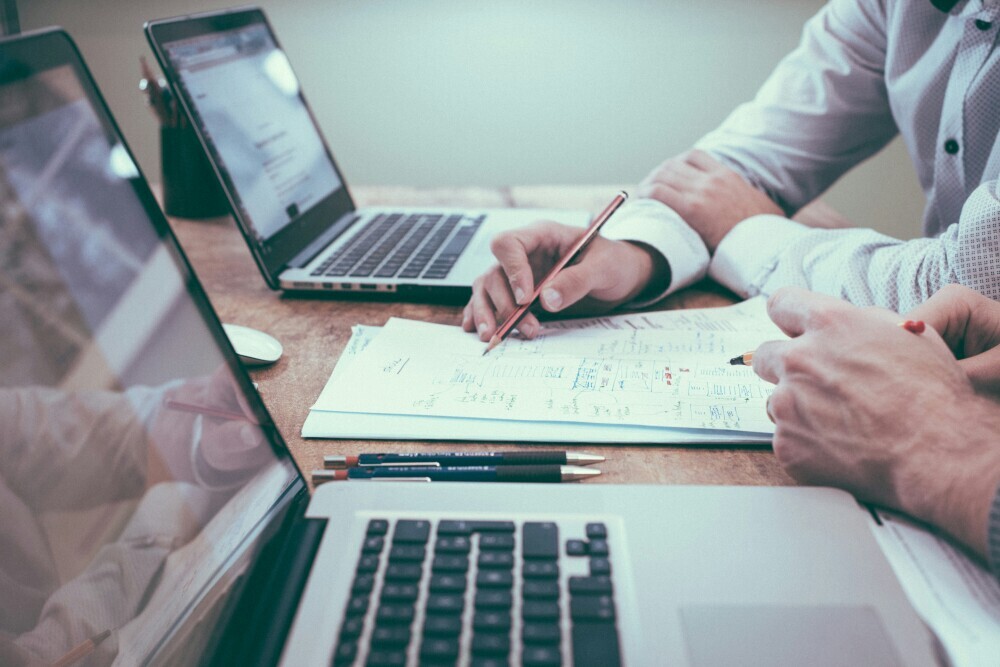
Section 8 focuses on the continual improvement of a laboratory’s operations, policies, and procedures. Many labs integrate elements from other quality standards, such as ISO 9001, into their management systems.
ISO/IEC 17025:2017 establishes management system requirements to ensure that laboratories consistently achieve valid results, demonstrate technical competence, and meet regulatory and accreditation expectations. Laboratories must implement a structured management system that supports continuous improvement, risk management, and quality assurance.
Management System Options
Laboratories have two options for implementing their management system:
- Option A – The laboratory establishes a management system that meets the specific requirements outlined in ISO/IEC 17025:2017, including policies, procedures, and documented controls.
- Option B – The laboratory integrates an ISO 9001-compliant quality management system that aligns with the requirements of ISO/IEC 17025:2017 while fulfilling general quality management principles.
Regardless of the chosen approach, the system must ensure laboratory operations are conducted impartially, competently, and consistently.
Management System Documentation (Section 8.2)
A laboratory must develop and maintain documented policies and objectives to ensure compliance with ISO/IEC 17025:2017. This includes:
- Establishing a quality policy that emphasizes impartiality, competence, and reliability.
- Defining quality objectives aligned with customer and regulatory expectations.
- Ensuring all management system documentation is accessible to relevant personnel.
All personnel must understand and comply with the policies and objectives to uphold laboratory integrity.
Control of Documents and Records (Section 8.4 and 8.4)
Laboratories must maintain document control procedures to ensure that all internal and external documents related to laboratory activities are current, authorized, and properly managed. This includes:
- Periodically reviewing and updating documents to ensure accuracy and relevance.
- Controlling distribution and access to prevent the unintended use of outdated versions.
- Retaining records of laboratory activities in a secure and retrievable manner.
Proper document control safeguards traceability, consistency, and regulatory compliance.
Actions to Address Risks and Opportunities (Section 8.5)
Laboratories must take a proactive approach to risk management by identifying and addressing risks that could impact the validity of results or management system effectiveness. This involves:
- Assessing risks and opportunities related to laboratory activities.
- Implementing measures to eliminate, mitigate, or control risks.
- Monitoring and reviewing risk management actions to ensure effectiveness.
A structured risk-based approach enhances decision-making, prevents issues, and fosters continual improvement.
Continuous Improvement (Section 8.6)
A laboratory must actively seek opportunities for improvement by analyzing operational performance and customer feedback. This includes:
- Reviewing audit results, corrective actions, and process efficiency.
- Encouraging personnel to contribute improvement suggestions.
- Implementing changes that enhance laboratory effectiveness, efficiency, and compliance.
Improvement efforts ensure the laboratory remains resilient, adaptable, and competitive.
Corrective Actions (Section 8.7)
When nonconformities occur, laboratories must follow a systematic corrective action process to identify root causes and prevent recurrence. This involves:
- Investigating the cause of the nonconformity.
- Implementing corrective actions to eliminate the root cause.
- Monitoring the effectiveness of corrective measures.
Corrective action processes strengthen laboratory reliability and compliance.
Internal Audits (Section 8.8)
Laboratories must conduct regular internal audits to verify compliance with ISO/IEC 17025:2017 and assess the effectiveness of their management system. The audit process includes:
- Establishing an audit schedule based on process importance and previous audit results.
- Reviewing procedures, records, and laboratory operations to identify nonconformities.
- Implementing corrective actions to address audit findings.
Internal audits drive continuous improvement and maintain accreditation readiness.
Management Reviews (Section 8.9)
Laboratory management must conduct periodic reviews of the management system to evaluate overall performance and identify areas for improvement. These reviews should consider:
- Audit results, corrective actions, and risk assessments.
- Customer feedback and complaints.
- Performance metrics related to laboratory operations.
- Opportunities for strategic improvement.
Management reviews ensure that the laboratory remains aligned with its objectives, accreditation requirements, and customer expectations.
Conclusion
By adhering to these management system requirements, laboratories ensure consistent, reliable, and impartial operations while maintaining compliance with ISO/IEC 17025:2017. A well-structured management system fosters continuous improvement, risk-based thinking, and robust quality assurance, reinforcing laboratory competence and customer trust.
Key Considerations and Common Challenges
No accreditation journey is without its challenges. In my time as a certified assessor, I have observed that common hurdles include:
- Documentation Overload: The extensive documentation required can be overwhelming. Labs need to keep detailed records for every aspect of their work, making an effective document control system very important.
- Staff Engagement: It can be tough to ensure every employee understands the significance of established procedures. Ongoing training and clear communication are essential for bridging this gap.
- Equipment Calibration: Maintaining calibration for all instruments and keeping traceable records demands continuous effort. Proper calibration is a very important part of ensuring accurate results.
- Resource Allocation: Balancing the costs and time required to meet these standards with day-to-day operations is challenging. A solid plan and management commitment help smooth the way for proper resource distribution.
Addressing these challenges head-on with careful planning and a culture of quality can help laboratories overcome obstacles. My experience with both implementing and assessing these systems has provided me with insights that make the process more manageable.
Frequently Asked Questions
Question: What is the primary purpose of ISO/IEC 17025 certification?
Answer: The certification confirms that a laboratory is competent in its testing and calibration processes by meeting international standards for quality and reliability.
Question: How long does the certification process typically take?
Answer: Timelines vary based on a laboratory’s size and complexity. A solid gap analysis followed by targeted process improvements can take several months. In my experience, proper planning often shortens the overall timeline.
Question: What should a laboratory do to prepare for an assessment?
Answer: Begin with a detailed review of your processes and conduct a gap analysis. Update procedures, train staff, and perform internal audits. Regular reviews and proper documentation are key to ongoing compliance.
Question: How important is continued training for maintaining accreditation?
Answer: Continued training is really important because it keeps staff updated on best practices and procedural changes. Laboratories that invest in ongoing training typically maintain their accreditation status more reliably.
Final Thoughts on ISO/IEC 17025 Certification
Implementing the requirements of ISO/IEC 17025:2017 may seem challenging at first, but a structured approach and clear understanding of each section make it much more manageable. My experience as an assessor confirms that rigorous documentation, ongoing staff training, and robust internal systems are key to achieving and maintaining certification.
The standard covers principles from impartiality and confidentiality to specifics about organizational structure, resource management, process documentation, and continuous improvement. With strong commitment and attention to detail, laboratories can see certification as a smart investment in their future. It builds trust and demonstrates that testing results are consistent, accurate, and accepted globally.
I encourage all laboratories to review these requirements carefully. With thorough planning, attention to detail, and a commitment to continuous improvement, the benefits of ISO/IEC 17025 certification become truly transformative. Trust in your processes, work hard on clear documentation, and keep training your staff. These steps can really make a difference in providing dependable and universally accepted results.
🕒 Book Your Free 45-Minute Consultation
Have questions about ISO/IEC 17025 or ISO 9001 implementation or accreditation? Schedule a free 45-minute consultation with me to discuss your Company or laboratory’s needs and how we can achieve compliance together.
Schedule Your Consultation